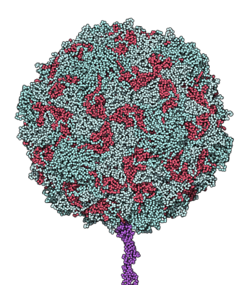CD155 (cluster of differentiation 155), also known as the poliovirus receptor, is a protein that in humans is encoded by the PVR gene. [3] [4] It is a transmembrane protein that is involved in forming junctions between neighboring cells. It is also the molecule that poliovirus uses to enter cells. The gene is specific to the primates.


